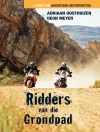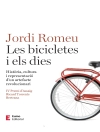In the late 1960s, the old Rover Company put everything it knew into a complex luxury saloon codenamed P8. At the same time, it planned to branch out into a new sector of the market with a stunningly advanced mid-engined sports car prototype that became a formal project with the codename of P9. However, with the forced merger into British Leyland in 1968, Rover found itself squeezed between Triumph and Jaguar: neither marque welcomed the new sports car, and Jaguar particularly did not welcome the new luxury saloon. Little by little, Rover’s plans were undermined, and in 1970 the sports car was killed off, followed by the luxury saloon, which was axed in 1971, a mere six months before production was due to start. Just a year later, Rover itself ceased to exist as a separate business after a forced merger with Triumph.
关于作者
D.J. COOKE spent his working life in the motor industry in a variety of enjoyable roles but has always had a close connection with Rovers and Land Rovers from the 1960s onwards, having owned and modified quite a few. After finally managing to view early prototypes of both subject cars, and prompted by an old school friend, he was moved to co-write this book to set the record straight, not knowing that it would take five long years of research to piece together. Armed with the full story at last, it now rankles even more that he never got to experience these two exciting and forward-looking V8 motor cars in period.












